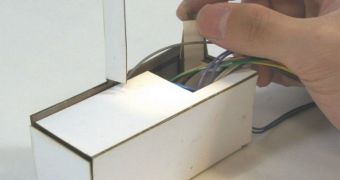The whole point of making a machine is to render a process or other automatic, but for all their repetitiveness, machines don't often have the ability to assemble on their own. This is slowly changing, however.
The latest piece of evidence to this effect is a certain lamp that the folks at Harvard have put together. Specifically, a lamp that can assemble itself.
What makes it double noteworthy is that the lamp was 3D printed. And we don't just mean that the framework was created through additive manufacturing.
Indeed, the entire lamp, or most of it, was created through 3D printing technology. To be more precise, only the Arduino-based board and the LED components weren't 3D printed.
So, the 3D printed parts are the frame of the lamp, the shape memory polymers, the mechanical switch, and even the capacity touch sensors.
Of that list, the memory polymers are the most important, as they are self-folding, hence the ability of the lamp to assemble independently. It will definitely add some class and make the task of installing the item in your living room interesting.
Harvard researchers, ByungHyun Shin, Samuel M. Felton, Michael T. Tolley, and Robert J. Wood, are the ones that have pulled off this latest success. They revealed the item at the IEEE International Conference on Robotics and Automation (ICRA).
It takes only a few seconds for the lamp to fold up and put itself together, and they've got a video to prove it. You can see it below, where we've embedded it. It's a bit crude, rough around the edges, but it works.
It probably would have looked a lot more awesome if those many wires weren't just lying around like that, in need of being moved out of the way all the time, but early prototypes can always be expected to come across as a bit unrefined.
That said, the lamp has touch sensors, which can turn the LED on or off depending on applied force. Dimming or turning up the intensity of the light is possible as well, as you might have already guessed. As for the mechanical switch, its role is to switch open and closed the printed electrical contacts.
It's not clear what this invention heralds. Some believe it is a sign of future home-made, customized 3D printed electronics devices, while others believe that prototyping can be done a lot faster for everything now. Most likely, advances will be done in both those areas, and others.

 14 DAY TRIAL //
14 DAY TRIAL // 